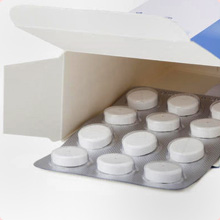Categories
- Alternative medicines
- Anti-infectives
- Antineoplastics
- Biologicals
- Cardiovascular agents
- Central nervous system agents
- Coagulation modifiers
- Gastrointestinal agents
- Genitourinary tract agents
- Hormones
- Immunologic agents
- Medical gas
- Metabolic agents
- Miscellaneous agents
- Inactive Ingredients
- Nutritional products
- Plasma expanders
- Psychotherapeutic agents
- Radiologic agents
- Respiratory agents
- Topical agents
- Uncategorized
This medicine is used to treat \"iron-poor\" blood (anemia) in people with long-term kidney disease. It is a form of iron that must be given by injection. You may need extra iron because of blood loss during kidney dialysis treatment.
Iron is an important part of your red blood cells and is needed to carry oxygen throughout the body. Many patients with kidney disease cannot get enough iron from food and require injections.
How to use Feraheme IV
This medication will be given by a health care professional. It is given slowly into a vein (IV), usually in a clinic or in a hospital. Treatment involves receiving two doses of ferumoxytol, given 3 to 8 days apart during dialysis.
The dosage is based on your medical condition and response to treatment. Your doctor will take blood tests to monitor your treatment.
Dizziness or fainting (hypotension) may occur. Pain, swelling, or redness at the injection site may also occur. If any of these effects persist or worsen, tell your doctor or pharmacist promptly.
To reduce the risk of dizziness or fainting, get up slowly when rising from a sitting or lying position.
Remember that your doctor has prescribed this medication because he or she has judged that the benefit to you is greater than the risk of side effects. Many people using this medication do not have serious side effects.
Tell your doctor right away if any of these unlikely but serious side effects occur: unusual bruising, skin darkens (bronze tone), swelling of hands/feet/lower legs, chest pain.
A very serious allergic reaction to this drug is rare. However, get medical help right away if you notice any symptoms of a serious allergic reaction, including: rash, itching/swelling (especially of the face/tongue/throat), severe dizziness, trouble breathing.
This is not a complete list of possible side effects. If you notice other effects not listed above, contact your doctor or pharmacist.
In the US -
Call your doctor for medical advice about side effects. You may report side effects to FDA at 1-800-FDA-1088.
In Canada - Call your doctor for medical advice about side effects. You may report side effects to Health Canada at 1-866-234-2345.
Before taking ferumoxytol, tell your doctor or pharmacist if you are allergic to it; or if you have had a reaction to other types of injectable iron; or if you have any other allergies. This product may contain inactive ingredients, which can cause allergic reactions or other problems. Talk to your pharmacist for more details.
Before using this medication, tell your doctor or pharmacist your medical history.
This drug may make you dizzy. Do not drive, use machinery, or do any activity that requires alertness until you are sure you can perform such activities safely. Limit alcoholic beverages.
During use and for 3 months after your last injection, tell X-ray staff that you use or used this medication. This medication can interfere with the results of an MRI scan.
Before having surgery, tell your doctor or dentist about all the products you use (including prescription drugs, nonprescription drugs, and herbal products).
During pregnancy, this medication should be used only when clearly needed. Discuss the risks and benefits with your doctor.
It is unknown if this drug passes into breast milk. Consult your doctor before breast-feeding.
Drug interactions may change how your medications work or increase your risk for serious side effects. This document does not contain all possible drug interactions. Keep a list of all the products you use (including prescription/nonprescription drugs and herbal products) and share it with your doctor and pharmacist. Do not start, stop, or change the dosage of any medicines without your doctor\'s approval.
Some products that may interact with this drug include: other iron products.
If overdose is suspected, contact a poison control center or emergency room immediately. US residents can call the US National Poison Hotline at 1-800-222-1222. Canada residents can call a provincial poison control center.
NOTES:
Laboratory and/or medical tests (such as complete blood count, iron level) should be performed periodically to monitor your progress or check for side effects. Make sure you keep all your medical and laboratory appointments.
It is important to eat a well-balanced diet to get enough iron, vitamins, and minerals. Good sources of iron include meats (especially liver), eggs, raisins, figs, broccoli, brussels sprouts, beans, lentils, and iron-fortified or enriched cereals. Follow diet recommendations for your condition.
MISSED DOSE:
For the best possible benefit, it is important to receive each scheduled dose of this medication as directed. If you miss a dose, contact your doctor immediately to establish a new dosing schedule.
STORAGE:
Not applicable. This medication is given in a hospital or clinic and will not be stored at home.
Information last revised October 2010. Copyright(c) 2010 First Databank, Inc.


